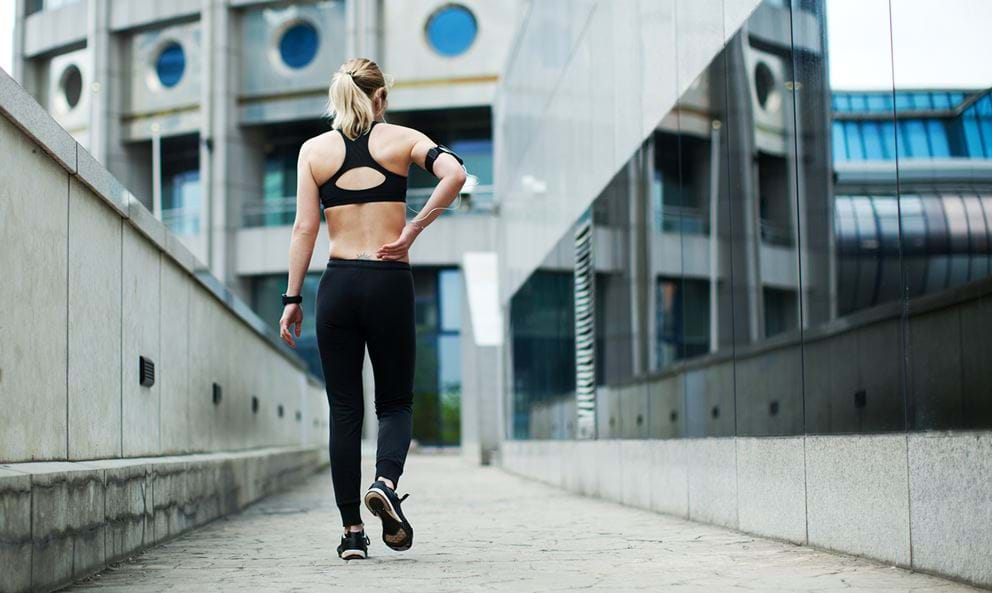How to Avoid Gym Based Back Pain

Back pain is one of the most common gym woes, and it has the power to not only ruin your workout, but make every part of your day difficult if you aren’t careful.
Luckily, knowing the common causes of back pain can give you a good idea of what not to do in the weights room.
Here’s a look at how to avoid hurting your back in the gym.
General gym causes of lower back pain
Poor form in general
Good form isn’t just a way of targeting the right muscles as well as possible; it’s also key to keeping your body in proper alignment and reducing the risk of injury.
When performing a deadlift, for example, you should maintain a flat back, and aggressively tense your core muscles during the lift to provide protection against the shearing forces exerted by the weight. Failure to do so will massively increase your risk of a back injury. If you're ever unsure about your form don't hesitate to ask a personal trainer at your gym.
Training to complete failure
A lot of bodybuilding gurus will tell you that you need to train to the point of absolute failure, and then squeeze out a few more cheat reps as well, in order to get the most out of your workout.
Tellingly enough, some of the biggest advocates of this training style, including six-time Mr Olympia Dorian Yates, find themselves riddled with serious injuries in later life.
Training to complete failure means that your form will falter sooner or later, and your joints will absorb a lot of extra stress as your muscles give out. Judge how much you can push yourself wisely and try not to push past your limits to reduce your risk of back injury.
Unaddressed muscle imbalances
A lot of ‘back problems’ don’t really originate in the back at all but are the result of muscle imbalances in other areas of the body.
Weak glutes are a major cause of lower back pain, as good glute activation is essential for reaching full flexion at the top of various movements, including the squat and deadlift.
When our glutes fail to do the work, some other part of the body will have to compensate and will likely become strained in the process. Typically, this means the back.
If you have recurring back pain, it could be well worth your time to arrange a consultation with a sports physiotherapist so that they can identify these weak areas and imbalances in your physique and help you to correct them.
Specific causes of back pain
A bulging/herniated disc
Herniated discs are a very common injury, with plenty of regular lifters experiencing this condition at some point in their lives.
Contrary to popular belief, herniated discs typically don’t require surgery to correct, but rather, the right rehabilitative exercises.
The right rehabilitative exercises are NOT exercises which involve forward bending of the spine, such as in knee-hugs and toe-touches. This will only cause the disc to bulge even more.
Instead, the first rehabilitative exercise should be to decompress your spine by hanging off a pullup bar — preferably with your toes touching the ground, to allow the lower back to relax properly into the stretch.
Next, work on resetting the disc by performing a yoga cobra pose, and hyperextending your back in a controlled stretch.
Gluteus Medius imbalances
The gluteus medius is a muscle that sits on the outer side of the pelvis, beneath other muscles.
The jobs of the gluteus medius are to enable you to lift your hip and out to the side, and also to keep your pelvis level and aligned as you walk.
When imbalances develop in the gluteus medius, it often manifests as lower back pain which shoots down into the hip.
This pain frequently develops when you have an unequal weight distribution over your hips when doing exercises like the squat. This could be because of bad barbell positioning, but it could also be because your hips are misaligned, and your own bodyweight naturally shifts more to one side.
To address gluteus medius imbalances, you can do various exercises, including what Athlean-X physical therapist Jeff Cavaliere calls “sack swingers”.
This exercise involves wearing a dipping belt with a weight suspended between your legs and walking around slowly and deliberately to force the muscles to engage and stabilise the hips.
Things not to do when you have lower back pain
Foam rolling your lower back
If you have back pain and you’re not sure what’s causing it, foam rolling your lower back is probably not a good idea. This is because your lower back lacks the rigid supportive bone structure of your upper back, so there’s little to stop a foam roller from causing damage to already inflamed or harmed tissue.
Focus, instead, on exercises you can control more fully.
Training through the pain
“Training through the pain” is generally one of the worst ideas when it comes to lower back pain, and dealing with injuries in general.
If your lower back is killing you, it doesn’t need more strain to get better. It needs time out of the gym, a possible consultation with a physiotherapist, and gentle rehab exercises only.


